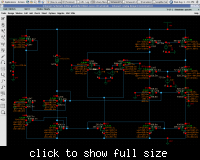ASHUTOSH RANE
Member level 2

HI friends i am designing the Folded cascode opamp. i am getting maximum gain of opamp as 46 dB..!
@L=900nm and VDD=1.8....if this is the only gain can be obtained then what is good to implement for increasing gain upto 70 dB
1) gain boosting
2)adding one more stage
my GBW requirement is 50MHz and SR is 30v/usec.....what do i do please suggest me
thanks in advance :-?
@L=900nm and VDD=1.8....if this is the only gain can be obtained then what is good to implement for increasing gain upto 70 dB
1) gain boosting
2)adding one more stage
my GBW requirement is 50MHz and SR is 30v/usec.....what do i do please suggest me
thanks in advance :-?





